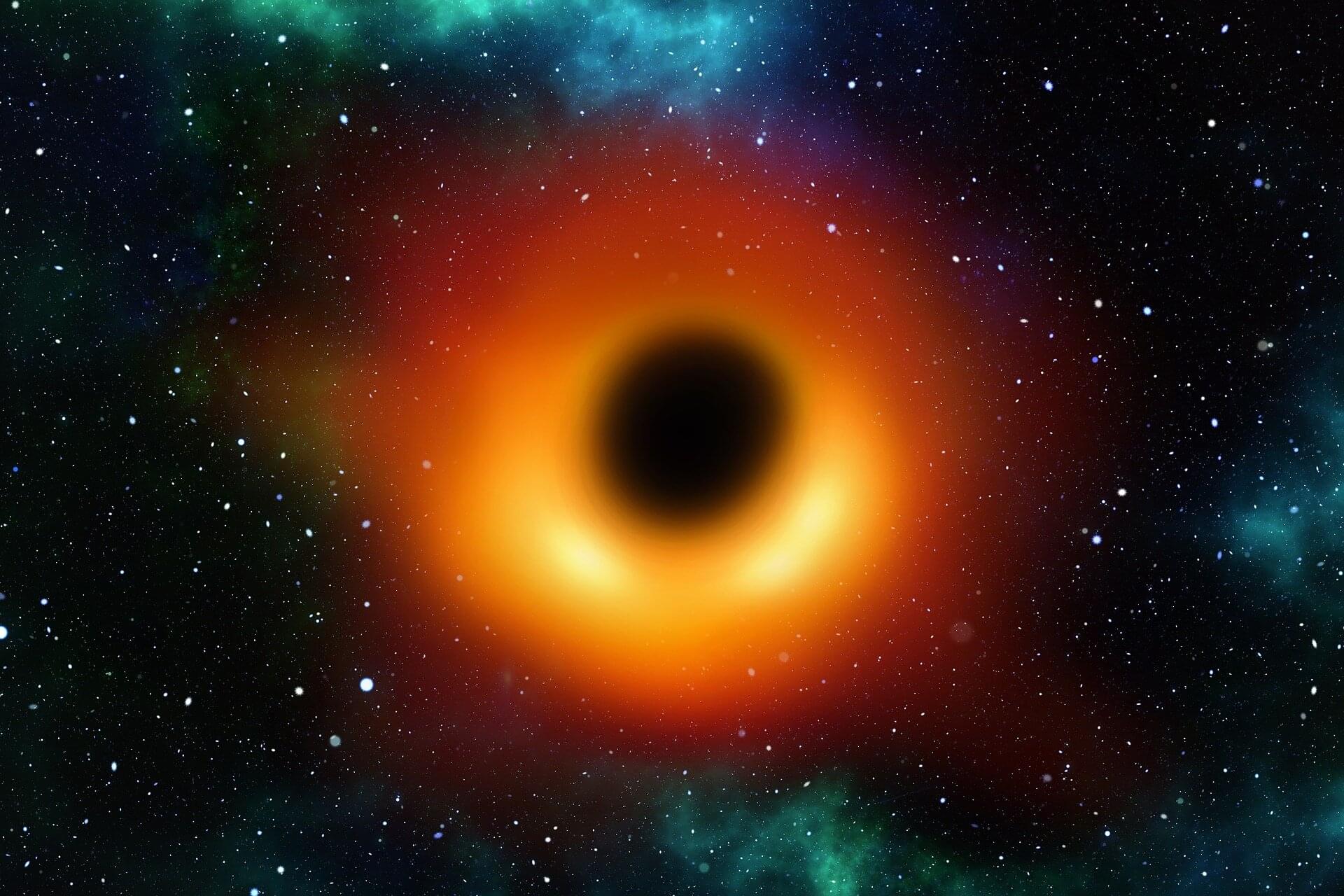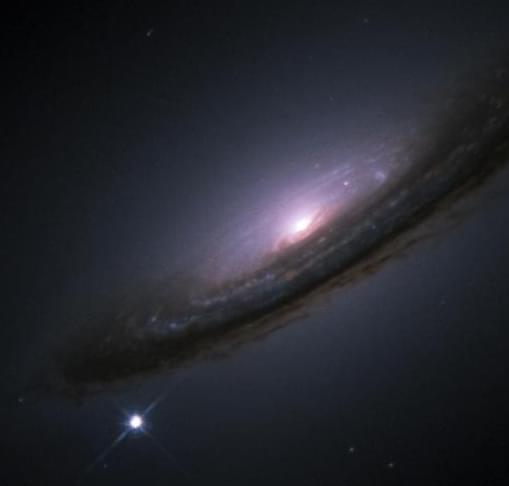Hubble’s new view of NGC 4102 exposes the soft glow of a supermassive black hole hidden behind dense gas.
Category: cosmology – Page 7

Astronomers Discover Potentially Habitable “Super-Earth” Just 18 Light-Years Away
Astronomers from the University of California, Irvine have discovered a planet orbiting within the “habitable zone” of its host star, a region where temperatures may allow liquid water to exist on the surface. Because water is essential for all known forms of life, this finding raises the possibility that the planet could have life-supporting conditions.
Located in a relatively nearby area of the Milky Way Galaxy, the planet appears to be rocky like Earth but several times more massive, earning it the classification of a “super-Earth.” The team of UC Irvine scientists and their collaborators describe their analysis of the planet in a new paper published in The Astronomical Journal.
“We have found so many exoplanets at this point that discovering a new one is not such a big deal,” said co-author Paul Robertson, UC Irvine associate professor of physics & astronomy. “What makes this especially valuable is that its host star is close by, at just about 18 light-years away. Cosmically speaking, it’s practically next door.”

Black hole mergers could give rise to observable gravitational-wave tails
Black holes, regions of spacetime in which gravity is so strong that nothing can escape, are intriguing and extensively studied cosmological phenomena. Einstein’s general theory of relativity predicts that when two black holes merge, they emit ripples in spacetime known as gravitational waves.
Once the gravitational waves originating from black hole mergers fade, subtle hints of these waves could remain, known as late-time gravitational-wave tails. While the existence of these tails has been widely theorized about in the past, it was not yet conclusively confirmed.
Researchers at Niels Bohr Institute, University of Lisbon and other institutes worldwide recently performed black hole merger simulations based on Einstein’s general relativity equations, to further probe the existence of late-time gravitational-wave tails. Their simulations, outlined in a paper in Physical Review Letters, suggest that these tails not only exist, but could also have a larger amplitude than originally predicted and could thus be observed in future experiments.

Our solar system is moving faster than expected
How fast and in which direction is our solar system moving through the universe? This seemingly simple question is one of the key tests of our cosmological understanding. A research team led by astrophysicist Lukas Böhme at Bielefeld University has now found new answers, ones that challenge the established standard model of cosmology.
The study’s findings have just been published in the journal Physical Review Letters.
“Our analysis shows that the solar system is moving more than three times faster than current models predict,” says lead author Böhme. “This result clearly contradicts expectations based on standard cosmology and forces us to reconsider our previous assumptions.”

New evidence suggests Einstein’s cosmic constant may be wrong
Dark energy may be evolving—hinting that the universe’s ultimate destiny could be far stranger than we ever imagined. Astronomers are rethinking one of cosmology’s biggest mysteries: dark energy. New findings show that evolving dark energy models, tied to ultra-light axion particles, may better fit the universe’s expansion history than Einstein’s constant model. The results suggest dark energy’s density could be slowly declining, altering the fate of the cosmos and fueling excitement that we may be witnessing the universe’s next great revelation.
Dark energy, the mysterious force thought to drive the universe’s accelerating expansion, remains one of the deepest puzzles in modern physics. For years, the leading explanation has been that this energy is constant – an unchanging property of empty space responsible for cosmic acceleration. But recent evidence has scientists rethinking that assumption.
Last year, results from the Dark Energy Survey (DES) and the Dark Energy Spectroscopic Instrument (DESI) caught the attention of cosmologists by suggesting that dark energy might not be fixed after all. “This would be our first indication that dark energy is not the cosmological constant introduced by Einstein over 100 years ago but a new, dynamical phenomenon,” explained Josh Frieman, Professor Emeritus of Astronomy and Astrophysics.

Universe’s expansion ‘is now slowing, not speeding up’
The universe’s expansion may actually have started to slow rather than accelerating at an ever-increasing rate as previously thought, a new study suggests.
“Remarkable” findings published today in Monthly Notices of the Royal Astronomical Society cast doubt on the long-standing theory that a mysterious force known as ‘dark energy’ is driving distant galaxies away increasingly faster.
Instead, they show no evidence of an accelerating universe.

A Mathematician’s Model Brings Science Fiction’s Wormholes Closer to Reality
Could a tunnel through space and time—long a dream of science fiction—ever exist in theory? According to Arya Dutta, a Ph.D. student in Mathematics at the Katz School, the answer might be yes, at least on paper.
Accepted for publication in the International Journal of Geometric Methods in Modern Physics, Dutta’s study, “Thin-shell Wormhole with a Background Kalb–Ramond Field,” explored a mathematical model of a wormhole—a hypothetical shortcut through spacetime that could, in theory, connect two distant regions of the universe. “A wormhole allows faster-than-light travel or even time travel,” said Dutta. “It hasn’t been observed yet, but theoretical research has advanced a lot.”

‘Impossible’ merger of two massive black holes explained
In 2023, astronomers detected a huge collision. Two unprecedentedly massive black holes had crashed an estimated 7 billion light-years away. The enormous masses and extreme spins of the black holes puzzled astronomers. Black holes like these were not supposed to exist.
Now, astronomers with the Flatiron Institute’s Center for Computational Astrophysics (CCA) and their colleagues have figured out just how these black holes may have formed and collided. The astronomers’ comprehensive simulations—which follow the system from the lives of the parent stars through to their ultimate death—uncovered the missing piece that previous studies had overlooked: magnetic fields.
“No one has considered these systems the way we did; previously, astronomers just took a shortcut and neglected the magnetic fields,” says Ore Gottlieb, astrophysicist at the CCA and lead author of the new study on the work published in The Astrophysical Journal Letters. “But once you consider magnetic fields, you can actually explain the origins of this unique event.”
What if the CMB Isn’t Actually Cosmic? — Dr. Patrick Vanraes, DemystifySci #380
The universe hums a low, steady note…or so we were told. Dr. Patrick Vanraes, a plasma physicist from the University of Antwerp, joins us in that quiet static, where light and truth blur at the edges. We talk of cosmic beginnings, instrument design, of warmth beneath the skies, of radio echoes mistaken for the birth of everything. In that hum, between curiosity and doubt, the cosmos seems to ask who’s really paying attention.
CORRECTION NOTE: Dr. Robitaille wishes it to be known that when he says \.

A long, bumpy caterpillar-like wormhole may connect two black holes
For obvious reasons, we do not know what the inside of a black hole looks like. But thanks to theoretical physics, we can ask what the inside should look like if Einstein’s theory of gravity and the rules of quantum mechanics are both true. A new study published in the journal Physical Review Letters has done exactly this by concentrating on two black holes that are deeply entangled (linked together by quantum rules).
The research by scientists from the U.S. and Argentina theoretically mapped the shared inner space between the two objects—the wormhole connecting them. They found that for a typical, messy entangled pair, the interior isn’t the smooth tunnel of science fiction.
Instead, it’s a long, lumpy structure they called the “Einstein-Rosen caterpillar.” It’s named after the Einstein-Rosen Bridge, the mathematical structure that connects two regions of spacetime, and “caterpillar” because of its bumpy, segmented shape. This discovery is a significant step toward proving that the bizarre rules of quantum mechanics can control the shape of spacetime inside a black hole.